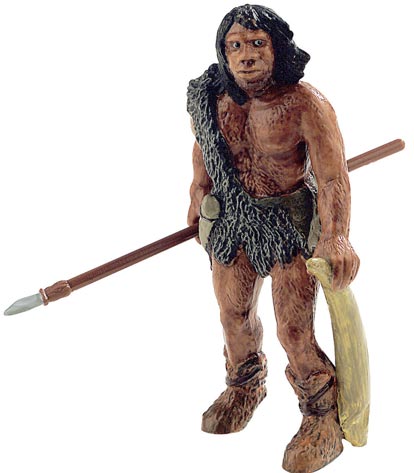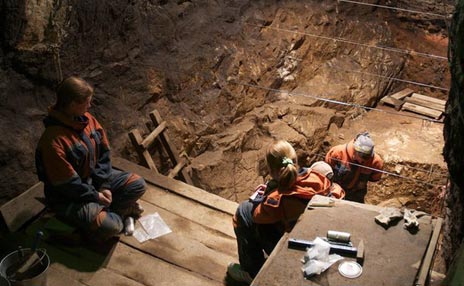Humans and Neanderthals Interbred “100,000” Years Ago
Previous research has demonstrated that modern humans (Homo sapiens) interbred with Neanderthals outside Africa from between 65,000 and 47,000 years ago. As a result, many of us “modern people”, especially those from Europe and Asia, contain a little bit of ancient Neanderthal DNA in our genome. However, in a new study, published in the journal “Nature” the genomes of a Neanderthal woman and a third species of ancient hominin, a Denisovan, obtained from fragmentary fossil material found in the remote Altai Mountains of Siberia, suggests that interbreeding between Neanderthals and our species took place much earlier than previously thought. No modern human genetic mixing was detected in the Denisovan genome.
A Neanderthal – Interbreeding Between the Species 100,000 Years Ago
For models and replicas of ancient hominins and other figures: Wild Safari Prehistoric World Figures.
Encountering Neanderthals
It had been suggested that our species first began encountering Neanderthals (Homo neanderthalensis) as modern humans began to migrate out of northern Africa into the Middle East and Europe sometime around 65,000 years ago. This new study suggests “hanky-panky” took place between these species much earlier, as the genetic fingerprints don’t lie, it seems that a few of our African ancestors must have left their homelands a lot earlier, some 35,000 years earlier to be exact. Or did some Neanderthals move into Africa and encounter humans, interbreed and then these descendants migrated out into Asia?
The lack of Neanderthal tool technology and fossil evidence casts doubt on this particular idea, it seems more likely that modern humans migrated out of their African homelands much earlier than previous research had indicated.
Examining Fossil Remains
The international team of researchers, which included scientists from the Max Planck Institute for Evolutionary Anthropology (Leipzig, Germany) sequenced the Siberian fossil remains and compared them to the sequences of chromosome 21 from two Neanderthal specimens, one from Spain, the other from Croatia. This new study finds that a population that diverged early from other modern humans in Africa contributed genetically to the ancestors of Neanderthals from the Altai Mountains some 100,000 years ago. No genetic contribution was detected in the two European Neanderthals or indeed within the Denisovan genome. This research indicates that in addition to later interbreeding events, the ancestors of Neanderthals from the Altai Mountains and early modern humans mingled and interbred, possibly in the Near East.
Commenting on the importance of this discovery and its implications for our own evolution, Dr. Sergi Castellano (Max Planck Institute for Evolutionary Anthropology) stated:
“It is significant for understanding the history of modern humans and Neanderthals.”
Earlier Human Migration Out of Africa
The genetic evidence suggests that early modern humans must have migrated out of Africa in significant numbers much earlier than 65,000 years ago. It is not clear what impact the genetic contribution of our species had on the Neanderthals. If interbreeding was taking place it can be assumed that there must have been other forms of contact between these two species, perhaps simple bartering and the exchange of ideas, or perhaps one group raided the other and stole females away. This sort of behaviour has been recorded in hunter-gather populations and within chimpanzee populations.
Scientists Working in the Remote Cave where the Denisovan Material was Found
Picture credit: Bence Viola
Professor Chris Stringer, an expert in the evolution of hominins, based at the London History Museum explained:
“I think that anywhere in southern Asia could theoretically have been the location of this early interbreeding, since we really don’t know how widespread Neanderthals and early modern humans might have been in the regions between Arabia and China at this time.”
The professor added: “May be one group adopted the abandoned or orphaned babies of the other. Eventually, geneticists should be able to show if the transfer of DNA in either direction was mainly via males, females, or about equal in proportion, but it will need a lot more data before that becomes possible.”








Leave A Comment